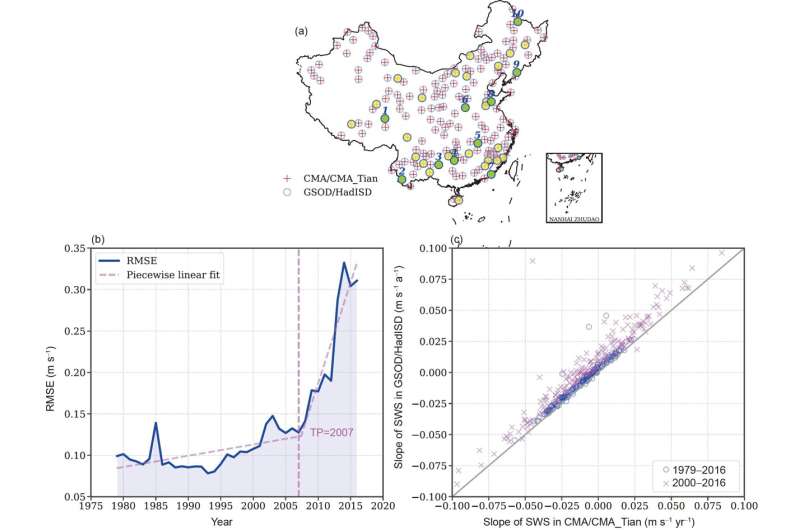Since the 1960s, a significant trend has been that global land surface wind speed (SWS) has significantly weakened, a phenomenon known as global terrestrial stilling. The stilling is widespread worldwide.
It has seriously affected the ecological environment and social economy, especially as a factor restricting the sustainable development of the wind energy industry.
The latest research, by a team of Chinese scientists from Institute of Atmospheric Physics at Chinese Academy of Sciences and the National Marine Environmental Forecasting Center of the Ministry of Natural Resources, has found that the stilling reversed around 2010 and global SWS is strengthening. The results can provide scientific support for the layout of China’s wind power industry.
Wind power is an integral part of China’s strategy to achieve the carbon emission reduction targets set in the Paris Agreement. China’s aim is to have CO2 emissions peak before 2030 and achieve carbon neutrality before 2060.
Last year China broke the world record for most wind power capacity installed in a single year, with 52 gigawatts (GW) of new capacity — doubling the country’s annual installations compared to the previous year. China now has more wind power capacity than Europe, Africa, the Middle East, and Latin America combined.
Based on observational SWS data from 1971 to 2019, the research team found that the annual mean SWS in China underwent a reversal from a continuous weakening trend to a significant strengthening trend around 2014, implying that stilling may have ended in 2014.
However, the researchers said there is still a lack of systematic quantitative analysis in China. The reversal had obvious regional and seasonal variations. For example, in Northeast China, Western Xinjiang and on the Tibetan Plateau, the years when both annual and seasonal mean SWS changed from a weakening to a strengthening trend were around 2013/2014, 1993/1994 and 2000, respectively; however, stilling is ongoing in the eastern and southern coastal areas, North China and Eastern Xinjiang.
In addition, by comparing the SWS data observed by China’s stations with the wind speed data obtained from global surface database (GSOD and HadISD), the research team found that GSOD and HadISD may have some uncertainties in characterizing the trend changes of SWS in China. The GSOD/HadISD-based results could be considered with some caution, the researchers said.

(b) 1979–2016 RMSE (m s−1) of annual mean SWS of the 171 pairs of stations, and associated piecewise linear fit, where the vertical dashed line and TP indicates the turning point;
(c) scatter plots of trend coefficients of annual mean SWS (m s−1 yr−1) in 1979–2016 versus those in 2000–2016.
Credit: Science China Press
Source: Science China Press via Physics.org, 28 June 2021 https://phys.org/news/2021-06-stilling-surface-china.html
Journal: Yang, Q., Li, M., Zu, Z. et al. Has the stilling of the surface wind speed ended in China?. Sci. China Earth Sci. (2021). https://doi.org/10.1007/s11430-020-9738-4